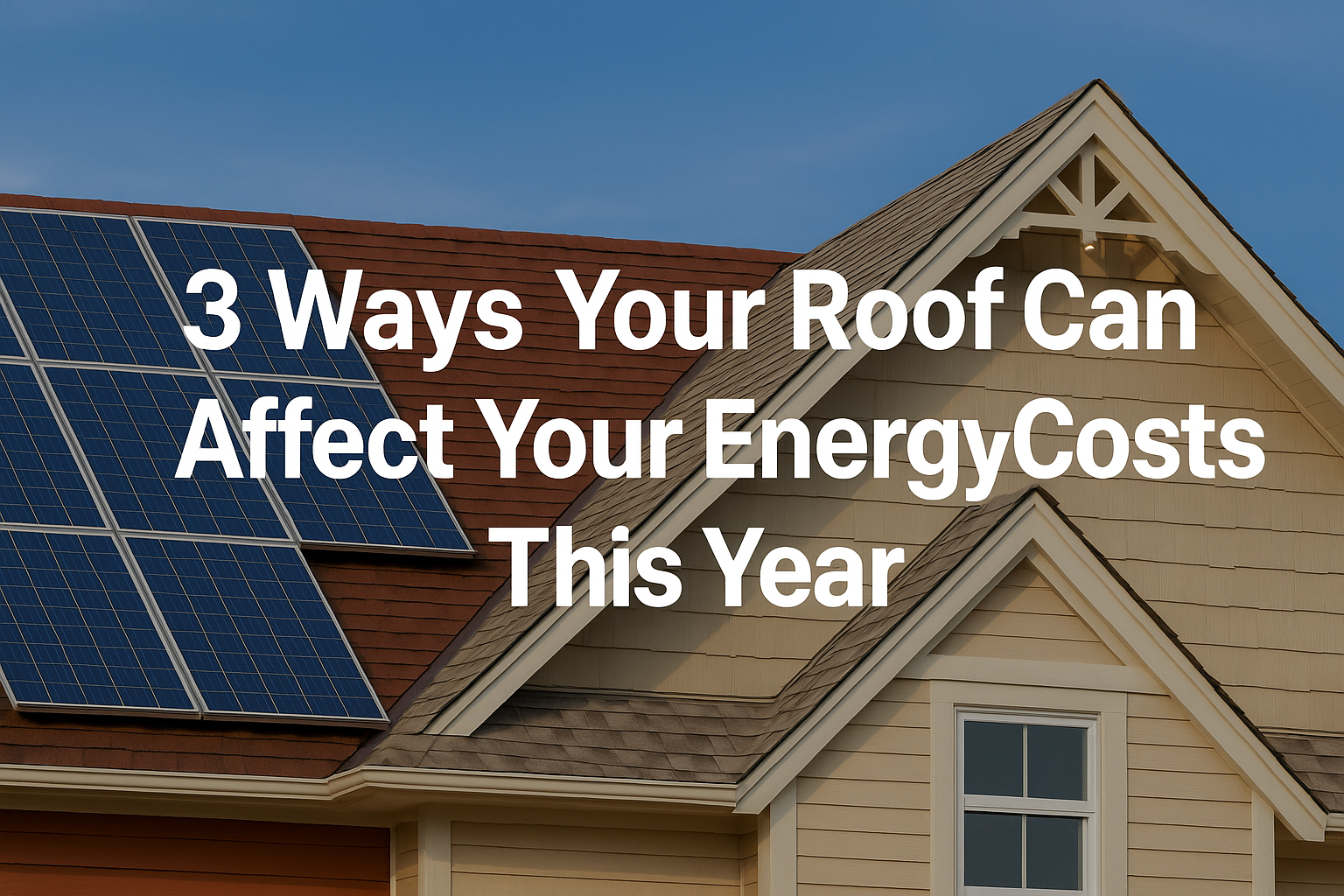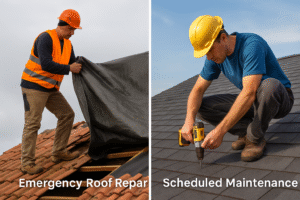Your roof does more than protect your home. It plays a direct role in your energy use. A poorly built or aging roof allows heat to escape in winter and traps it in summer. That imbalance forces your HVAC system to work harder. As a result, your energy bills climb without warning.
The right roof fixes that. It create a solid barrier against extreme temperature. It keep your home cooler during hot month and warmer during cold one. That balance means less energy waste and lower cost.
Ahmad Faiz from Achilles Roofing in Houston calls a new roof “a smart energy investment.” He sees real savings happen after every upgrade. Homeowners notice better indoor comfort and fewer spikes in electricity use.
Energy prices keep rising. A roof upgrade gives you more control over how much power your home needs. These three roofing choices lead to less strain on your system and more money in your pocket.
1. Improve Insulation and Ventilation
A new roof often includes stronger insulation. That upgrade keeps heat out in summer and traps warmth in during winter. Your HVAC system works less and uses less energy.
Ahmad Faiz from Achilles Roofing explains that this change brings noticeable results. In hot and humid regions, homes lose energy fast through weak roofing. Upgraded insulation seals those gaps and stops air from escaping. That barrier keeps rooms cooler and cuts down on energy waste.
Old roofs wear down over time. The materials weaken and lose their ability to hold temperature. Air slips through cracks, and your cooling or heating system must run longer. That constant strain leads to higher bills month after month.
Josh Riutta from Mikku and Sons Roofing in Phoenix points to another key factor—ventilation. Proper ventilation lets the attic release trapped heat and moisture. That airflow helps your home stay balanced, even during extreme weather. A cooler attic means less heat moving into your living space.
When insulation and ventilation work together, the results add up. Your system runs smoother. Your home feels more comfortable. And your energy bills stay lower all year.
Upgrading your roof isn’t just about shingles. It’s about building a smarter system that helps your home breathe and saves you money in the long run.
2. Pick the Right Roof Color
Shingle color has a direct impact on energy use. Dark-colored roofs trap heat from the sun. Light-colored roofs reflect it. This small design choice changes how hot your home feels, especially on summer days.
A darker roof turns your attic into a heat trap. That heat pushes down into the living spaces. Your air conditioner then has to work harder to cool the house. That extra load raises your energy bills.
Tyler Hull, owner of Modern Exterior, ran a simple test. He compared two identical homes—same square footage, same HVAC system. One had a dark roof, and the other had a light one. The darker-roofed house stayed 6 degrees hotter upstairs during peak heat. That difference forced the cooling system to run longer.
The results were clear. The home with the lighter roof saw a 21% drop in the electric bill in July. Nothing else changed. The roof color alone made that impact.
This shows that roof color isn’t just a design choice. It’s a smart energy decision. A lighter shingle reflect sunlight and reduce heat buildup. That lead to lower cost better comfort and less stress on your HVAC system.
If you’re planning a roof upgrade do not overlook color. Choosing the right shade can make your home cooler and your energy bills smaller.
3. Use Reflective Roofing Materials
Some roofs are built to fight heat. These are known as cool roofs. They reflect sunlight instead of absorbing it. That reflection keeps homes cooler during hot days.
Josh Riutta, roofing expert from Mikku and Sons, recommends using cool shingles, coated metal panels, or certain tile options. These materials lower attic temperatures and reduce the need for constant air conditioning. The result is quick energy savings.
Hot air often builds up under the roof. If the material absorbs sunlight, that heat seeps into the living space. Cool roofing materials solve that problem. They push the heat away before it enters your home.
Metal roofs are a strong choice for warm areas. More homeowner now choose aluminum, steel copper or zinc. These metal come with reflective coating that deflect up to 90% of solar heat. That level of protection drops the surface temperature of the roof. Cooler surfaces lead to cooler attics and lighter energy loads.
Riutta has seen the results. Homeowners who switch to reflective roofing often report major drops in summer energy use. In some cases, energy costs go down by 40% or more. That kind of return turns a roofing upgrade into a smart investment.
If you live in a sunny region, reflective materials should be at the top of your list. They work quietly, all day long, keeping your home cooler and your energy bill under control.
Final Thoughts
A roof upgrade does more than improve curb appeal. It directly affects how your home uses energy every day. Many homeowners overlook this. They focus on interior updates and forget the role the roof plays in energy loss and high utility bills.
The right roof acts like a shield. It keep the sun heat out during the summer and lock warmth in during the winter. That balance keeps your indoor space comfortable and steady. It also helps your HVAC system use less energy which means lower costs each month.
New insulation seal air leak and prevents heat transfer. Lighter roof colors reflect sunlight and reduce attic heat. Reflective materials block solar radiation before it enters your home. These small upgrades work together to cut energy use without extra effort from you.
Energy prices continue to rise across the country. Every degree your AC or heater doesn’t have to cover saves you money. That’s why a roofing upgrade isn’t just a home improvement—it’s a financial strategy.
You don’t need to replace everything to see results. Start by looking at your current roof. Is it outdated? Does it feel hotter upstairs? Are your cooling costs rising each year? If yes, then your roof could be the problem.
Talk to a local roofing expert who understands your climate. A professional can guide you to materials that fit your home’s needs. You’ll get a stronger roof, better comfort, and energy savings that last for years.
A smart roof upgrade gives you more than protection. It gives you control over your comfort, your budget, and your home’s long-term value.




